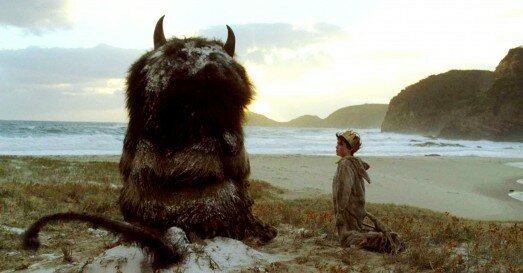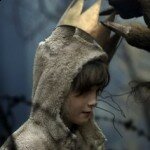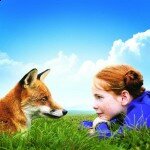“There’s one in all of us” declares the poster for Spike Jonze’s (Adaptation, Being John Malkovich) long awaited adaptation of Maurice Sendak’s celebrated children’s book Where the Wild Things Are. The tag-line is of course referring to a Wild Thing; an eccentric species of mischievous monsters that belong to the young, imaginative mind of misunderstood Max. They represent the part of us that still loves to get our clothes muddy. The part of us that wants to howl when we don’t get what we want. The part of us that, when no one else seems to understand, just wants to run away into our own imaginary world. In other words, they’re our inner child. And if Sendak’s book spoke directly to the child that is inside all of us, Jonze’s film lets it run wild for 100 magical minutes.
Faithful to the book, the film begins with cheeky young Max (Max Records) chasing his dog around the house with a fork. He escapes to depths of his imagination because his reality is changing uncontrollably; Max’s teenage sister is more interested in chasing boys than she is playing with her younger brother, while his mum (Catherine Keener) is too busy with work to be at his beck and call. Enraged by the lack of attention from his family, Max takes to the high seas of his imagination, setting sail to the island where the Wild Things are. Once there, he befriends equally playful, equally short-tempered Carol (James Gandolfini), who also worries his oddball family of Wild Things – including his best friends Douglas and KW (Chris Cooper & Lauren Ambrose), the miserable Alexander (Paul Dano), dopey Ira (Forest Whitaker) and feisty Judith (Catherine O’Hara) — are slowly being driven apart by changes in their lives. Promising to solve all their problems with his pretend powers, Max becomes the king of the Wild Things, but soon realises life can’t always be fun and games.
Tasked with turning a children’s book of 10 sentences into a feature length film, screenwriters Dave Eggers and Spike Jonze have done a masterful job of capturing the indistinct, childlike ethereality of the source material. This is a refreshingly impulsive film that actually benefits from a trifling narrative, focusing instead on character dynamics and things of thematic importance. The result is a family film that is as profound as Pixar’s Up, tastefully exploring darker issues such as domestic violence and personal anguish in the midst of brisk action scenes and laugh-aloud humour. That said, the rampant energy that makes the first half of the film such fun gradually loses its novelty value thereafter, as the slight shifts in tempo are lullingly repeated.
![where_the_wild_things_are25[1] where the wild things are251 200x304 custom Where The Wild Things Are (Review)](/wp-content/uploads/where_the_wild_things_are251-200x304-custom.jpg)
|
Lance Acord’s stunning cinematography is comprised of handheld camerawork and subdued colours, which capitalises on the organic beauty of the Eastern Australian backdrop. The Wild Things themselves are an absolute triumph of visual design, a perfect balance between stunning costumes and computer generated imagery for their facial expressions. I’m forever glad Jonze opted not to make them entirely CG animations, as the ‘human’ factor that can only derive from the actual presence of an actor adds such charming personality to each beastly creation. This is furthered by the uniformly brilliant voice talent, lead by a particularly standout James Gandolfini, who manages to rise above the ‘so-familiar-it’s-distracting’ pitfall that often plagues voice actors with a distinct vocal tone like his. As the only actor seen on screen for most of the film, young Max Records lets his expressive face fill in the silence left by his limited dialogue, yet he doesn’t quite make a big enough impression to divert our affection from the Wild Things, the real stars of the show.
Even though it’s geared towards the whole family, Where the Wild things Are is a film for the inner-child more than it is for actual children, as kids under the age of 10 might find a number of dark and aggressive scenes a little too frightening. For everyone else, Jonze’s film is a highly energising and cleverly perceptive cinematic experience that will no doubt enjoy a similar longevity as Sendak’s beloved book, which is now in its 46th year of publication.
 Follow the author Anders Wotzke on Twitter.
Follow the author Anders Wotzke on Twitter.
















